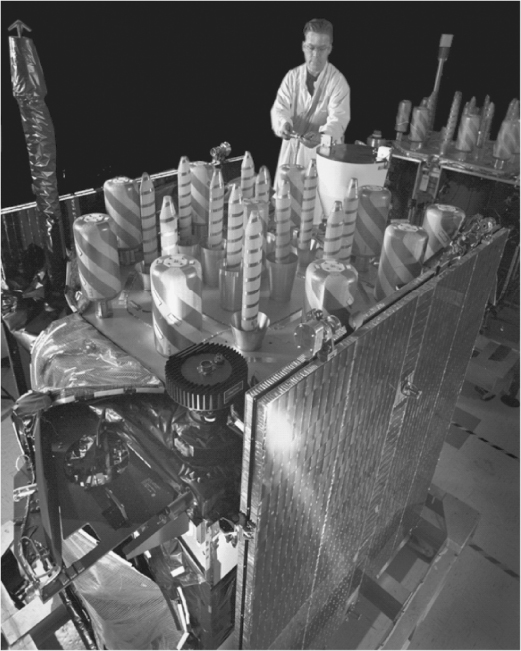Chapter 3
Satellite GNSS Antennas
3.1 Navigation Antenna Requirements
This chapter will take an overview of the antenna requirements and design techniques used for the spacecraft segment of the GPS system. Although the antenna farms are complex high-value systems, the antenna designer can infer useful techniques that can be translated into constructing specialised GNSS user antennas. Figure 3.1 shows the level of complexity of an antenna farm for the GPS III satellite. A typical spacecraft antenna farm consists of a number of antenna systems including:
- L-band downlink array that provides the L1, L2 and L5 navigation signals.
- UHF uplink array for search and rescue.
- S-B and TT&C (Tracking Telemetry & Control) up- and downlinks.
- UHF antennas for satellite control.
Figure 3.1 GPS III antenna farm (Lockheed Martin).

Here we will concern ourselves with the first two that are specific to GNSS antenna design.
3.2 Types of Antenna Deployed
As an example of a modern navigation antenna array we will consider the design for Galileo. Table 3.1 summarises the specification.
Table 3.1 Galileo navigation antenna array specification
| Frequency plan: | |
| Low band | 1145–1237 and 1259–1299 MHz |
| High band | 1555–1595 MHz |
| Coverage pattern | 12.67° from boresight with 2 dB isoflux window |
| Group delay variability across the field of view | Better than 30 mm pseudo-range error |
| Minimum gain at limit ... |

